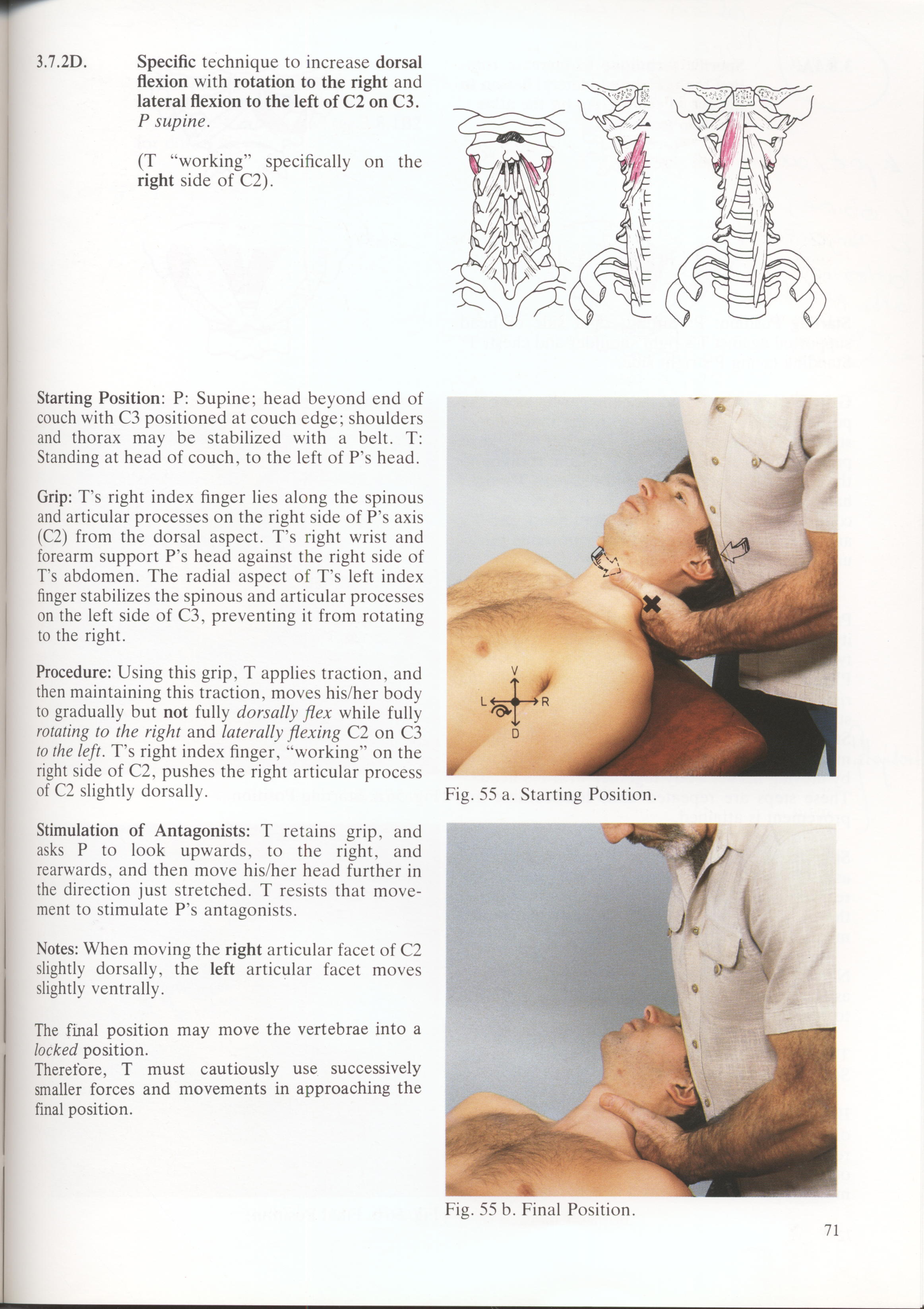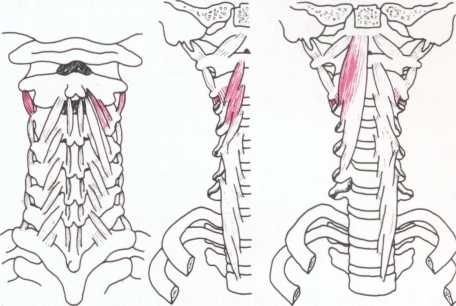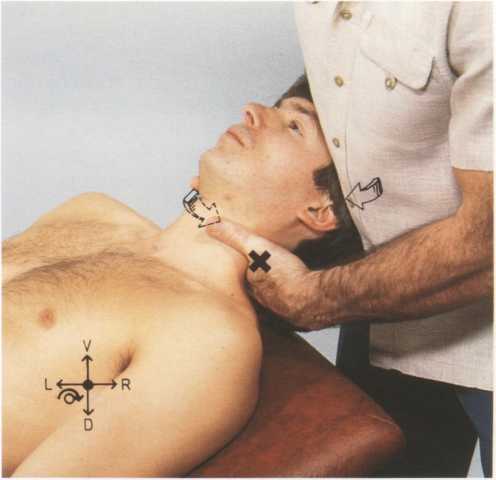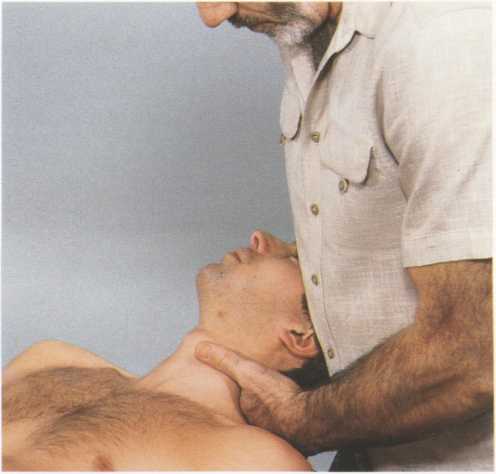71 (223)

3.7.2D. Specific techniąue to increase dorsal flexion with rotation to the right and lateral flexion to the left of C2 on C3.
P supine.
(T “working” specifically on the right side of C2).
Starting Position: P: Supine; head beyond end of couch with C3 positioned at couch edge; shoulders and thorax may be stabilized with a belt. T: Standing at head of couch, to the left of P's head.
Grip: T’s right index finger lies along the spinous and articular processes on the right side of P’s axis (C2) from the dorsal aspect. T’s right wrist and forearm support P’s head against the right side of T's abdomen. The radial aspect of T’s left index finger stabilizes the spinous and articular processes on the left side of C3, preventing it from rotating to the right.
Procedurę: Using this grip, T applies traction, and then maintaining this traction, moves his/her body to gradually but not fully dorsally flex while fully rotating to the right and laterally flexing C2 on C3 to the left. T’s right index finger, “working” on the right side of C2, pushes the right articular process of C2 slightly dorsally.
Stimulation of Antagonists: T retains grip, and asks P to look upwards, to the right, and rearwards, and then move his/her head further in the direction just stretched. T resists that move-ment to stimulate P’s antagonists.
Notes: When moving the right articular facet of C2 slightly dorsally, the left articular facet moves slightly ventrally.
The finał position may move the vertebrae into a locked position.
Therefore, T must cautiously use successively smaller forces and movements in approaching the finał position.


Fig. 55 a. Starting Position.

Fig. 55 b. Finał Position.
71
Wyszukiwarka
Podobne podstrony:
63 (253) 3.6.2D. Specific technique to increase dorsal flexion with rotation and lateral flex-ion to
56 (315) 3.5.5C. Non-specific technique for the deep ventral muscles to increase dorsal flexion
57 (308) 3.5.5D. Non-specific techniąue for the deep ventral muscles to increase dorsal flexion
58 (289) 3.6.1A. Non-specific techniąue to increase dorsal flexion with rotation and later-al flexio
60 (278) 3.6.2A. Specific technique to increase dorsal flexion with rotation and lateral flex-ion to
61 (265) 3.6.2B. Specific techniąue to increase dorsal flexion with rotation and lateral flex-ion to
62 (263) 3.6.2C. Specific techniąue to increase dorsal flexion with rotation and lateral flex-ion to
64 (250) 3.7.1A. Non-specific technique to increase dorsal flexion with rotation to the right a
65 (245) 3.7.IB. Non-specific techniąue to increase dorsal flexion with rotation to the right a
66 (237) 3.7.1C. Non-specific techniąue to increase dorsal flexion with rotation to the right a
67 (234) 3.7.2A1. Specific technique to increase dorsal flexion with rotation to the right and
68 (230) 3.7.2A2. Specific techniąue to increase dorsal flexion with rotation to the right and
69 (224) 3.7.2B. Specific techniąue to increase dorsal flexion with rotation to the right and l
45 (421) 3.5.1. Non-specific techniąue to increase dorsal flexion. P supine. Starting Position: P: S
46 (412) 3.5.2A. Specific technique to increase dorsal flexion of the occiput on the atlas. P sittin
47 (396) 3.5.2B. Specific techniąue to increase dorsal flexion of the occiput on the atlas. P sittin
48 (390) 3.5.2C. Specific technique to increase dorsal flexion of the occiput on the atlas. P supine
49 (372) 3.5.3A. Specific techniąue to increase dorsal flexion of the atlas on the axis. P. sitting.
50 (351) 3.5.3B. Specific techniąue to increase dorsal flexion of the atlas on the axis. P sitting.
więcej podobnych podstron